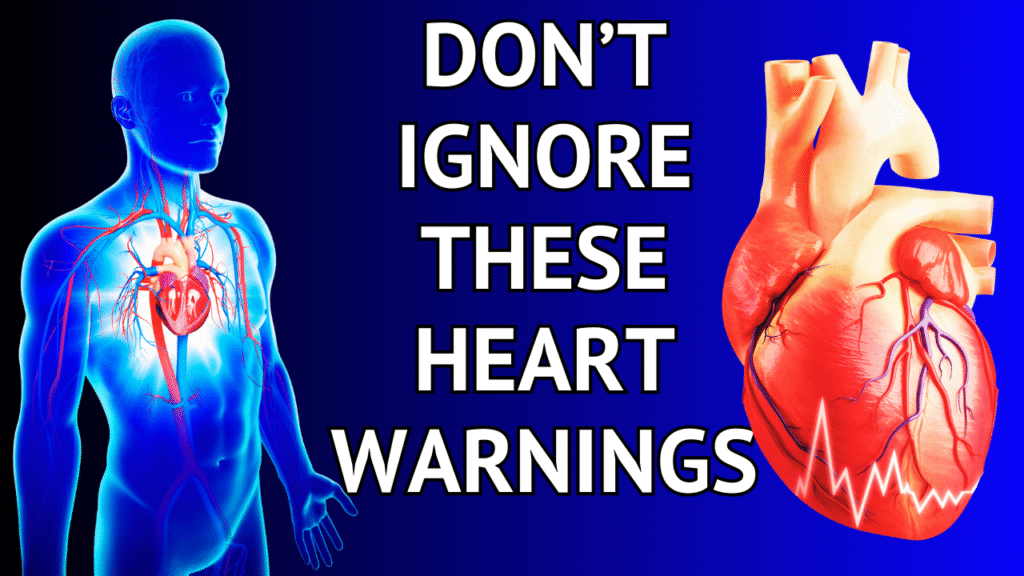
Imagine this: You wake up feeling completely fine, maybe even energized. But deep inside, your arteries could be quietly narrowing—choking off the vital blood flow your body needs to survive. No sharp pain. No collapse. Just a silent build-up that one day might erupt as a heart attack or stroke.
Blocked arteries are far more common than you think. In fact, they’re a leading cause behind heart disease—the number one killer worldwide.
But here’s the silver lining: your body often whispers before it screams. It sends out warning signals—small, subtle signs that something isn’t quite right. Recognizing these early could save your life.
Let’s uncover 9 critical warning signs your arteries may be clogged—and what you can do about it.
1. Chest Pain or Pressure
Do you feel a squeezing, tightness, or burning sensation in your chest—especially during exercise or stress?
This could be angina, a classic symptom of reduced blood flow to the heart due to plaque buildup in the coronary arteries. The discomfort may radiate to your shoulders, jaw, arms, or back. Unlike heartburn, angina doesn’t improve with antacids and usually follows a predictable pattern.
Don’t ignore chest pressure—it’s often your heart’s way of saying it’s not getting enough oxygen.
2. Shortness of Breath
Do you find yourself winded after simple activities like climbing stairs or walking across the room?
Blocked arteries force your heart to work overtime. If it can’t deliver enough oxygen-rich blood, your lungs feel the strain—leading to unexplained breathlessness, even when you’re at rest or lying down.
Persistent shortness of breath could be a warning of heart failure or severely clogged arteries.
3. Persistent Fatigue
We all feel tired from time to time. But if you’re chronically exhausted, even after a good night’s sleep, it may be a red flag.
When your arteries are blocked, your body is starved of oxygen and nutrients. This leads to low energy levels and overwhelming fatigue—especially during activities that never used to drain you.
This isn’t laziness or burnout. It could be your heart struggling to fuel your body.
4. Leg Pain or Cramping When Walking
Do your legs ache, cramp, or feel heavy while walking—but improve when you rest?
This is a textbook sign of Peripheral Artery Disease (PAD), caused by narrowed arteries in your limbs. Reduced blood flow deprives your muscles of oxygen, especially during movement.
If you notice leg pain with activity and relief with rest, get checked—it’s your circulation speaking up.
5. Nausea and Cold Sweats
Sudden waves of nausea or cold, clammy sweat—especially while sitting or lying down—should never be brushed off.
This can signal a heart attack in progress. When the heart doesn’t get enough oxygen, your body enters a fight-or-flight mode. Blood gets redirected away from digestion, leading to nausea, dizziness, and sweating.
If these symptoms strike unexpectedly—seek emergency help immediately.
6. Irregular or Rapid Heartbeat
Ever notice your heart skipping beats or racing for no reason?
Blocked arteries can cause your heart to overwork itself, leading to arrhythmias or palpitations. While an occasional flutter may be harmless, frequent or persistent irregular beats—especially when paired with dizziness or fatigue—could be a warning sign.
Don’t just blame anxiety or caffeine. Your heart rhythm deserves attention.
7. High Blood Pressure (Hypertension)
Often called the “silent killer,” high blood pressure is both a cause and a symptom of artery blockages.
As arteries narrow, your heart must pump harder to circulate blood. Over time, this extra force damages artery walls, accelerating plaque buildup and increasing your risk of stroke and heart attack.
Regular blood pressure checks are vital—even if you feel fine. Catch it before it’s too late.
8. Swollen Legs, Ankles, or Feet
Swelling in your lower limbs, known as edema, may be your heart’s way of waving a red flag.
If your heart can’t pump effectively due to restricted blood flow, fluid collects in the extremities—especially the legs. It can make shoes feel tight and leave impressions on your skin.
Persistent swelling can indicate heart failure or circulation issues—especially if accompanied by breathlessness or fatigue.
9. Cold or Discolored Hands and Feet
Do your hands or feet feel unusually cold, or appear pale or bluish?
Poor circulation caused by blocked arteries means less blood is reaching your extremities. Your body prioritizes vital organs like your brain and heart, sacrificing warmth and color in fingers and toes.
If your extremities often feel cold, numb, or tingly, it’s time to check your vascular health.
Listen to Your Body—It’s Telling You Something
Your body is a master communicator. These subtle symptoms are not just coincidences—they’re early cries for help from your cardiovascular system.
Recognizing these signs early—and taking action—can make all the difference between prevention and a medical emergency.
Here’s What You Can Do:
- ✅ Eat a heart-healthy diet rich in omega-3s, fiber, and antioxidants
- ✅ Get moving—30 minutes of activity a day goes a long way
- ✅ Quit smoking and limit alcohol
- ✅ Manage stress through meditation, sleep, or journaling
- ✅ Monitor blood pressure, cholesterol, and blood sugar regularly
- ✅ See a cardiologist if you experience any of these symptoms
🫀 Don’t wait for a heart attack to take your heart seriously.
Every small change adds up—and your future self will thank you for it.
Stay informed. Stay healthy. And always listen to your heart.
For more expert-backed tips and health insights, visit HealthAndWellnessBytes.com
